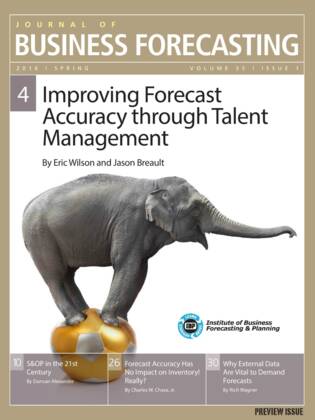Forecast Accuracy Has No Impact on Inventory! Really?
Today, companies work in what I refer to as the “polarized supply chain,” where you are a believer in either supply or demand. The pendulum seems to swing back and forth from decade to decade, focusing on supply or demand “processes and technologies” with little emphasis on people (skills and changing behaviors), and virtually no attention to predictive analytics. Companies continue to address the symptoms rather than the root cause. What’s more, supply centric strategies are suddenly being abandoned as the traditional use of buffer inventory (safety stock) to protect against demand volatility is no longer cost efficient. Although poor forecasting has been identified as the root cause, companies continue to use traditional statistical methods like moving averaging and non-seasonal exponential smoothing models, which are only accurate one period into the future. As a result, many companies are now taking a holistic approach to solving the root cause, which focuses on people (skills), horizontal processes, predictive analytics, and scalable technology, driven by structured and unstructured data addressing both supply and demand. It is referred to as the “holistic supply ...
From Issue:
Improving Forecast Accurancy through Talent Management
(Spring 2016)









